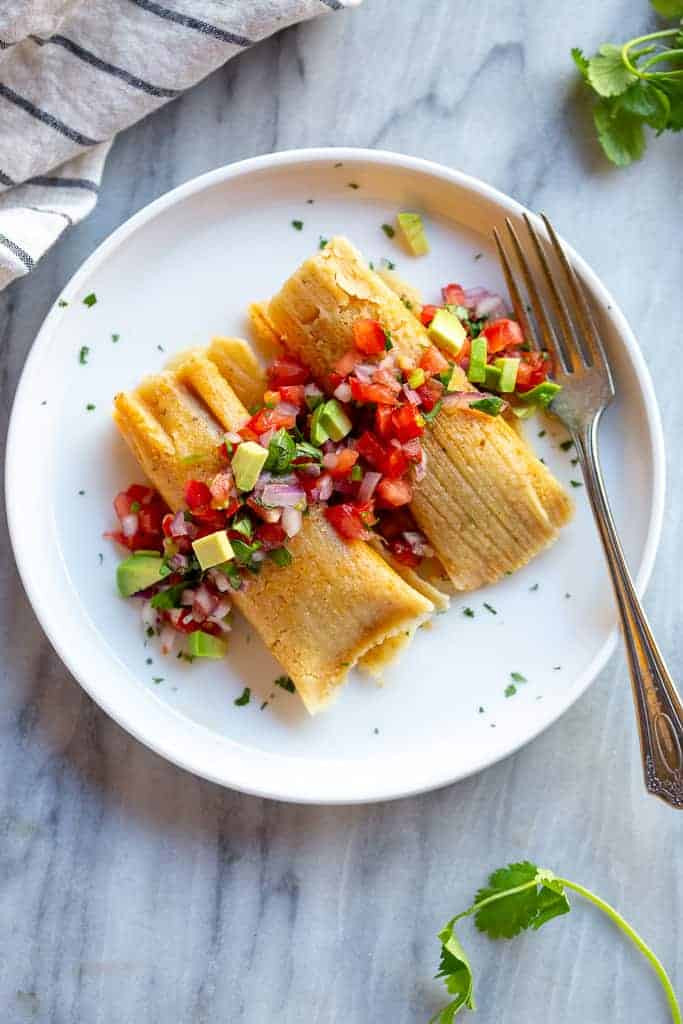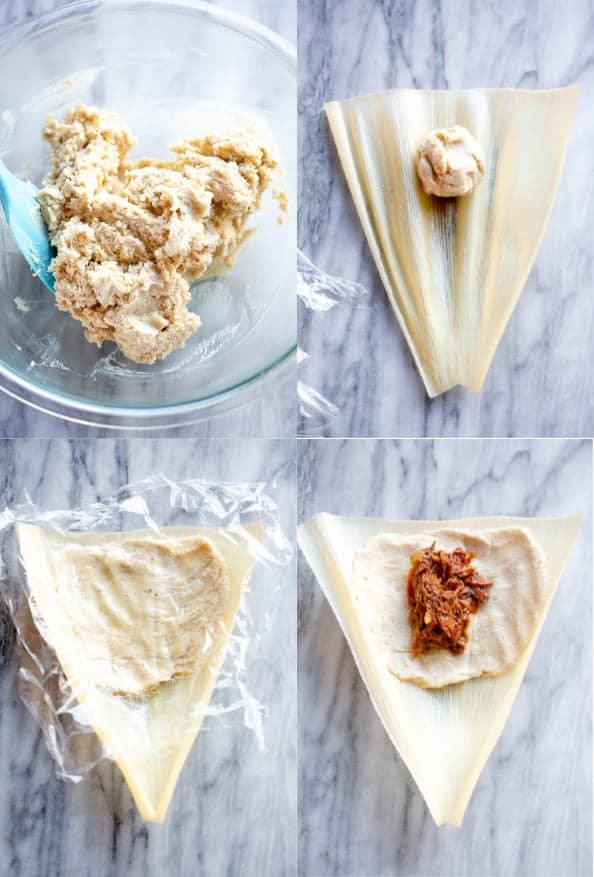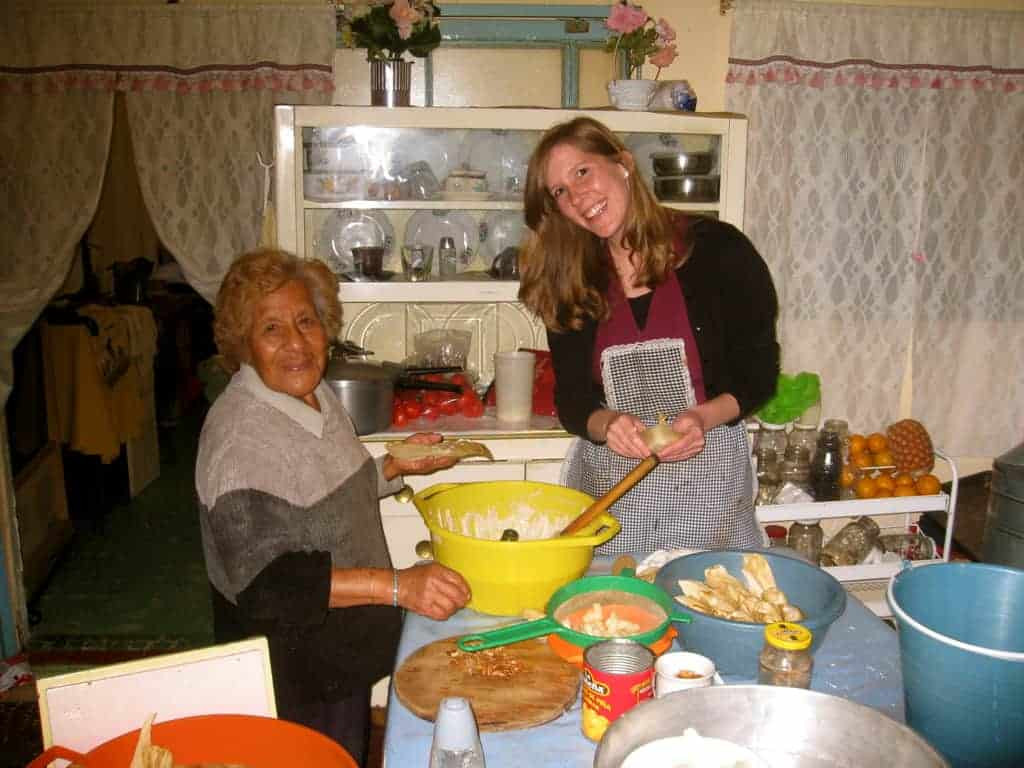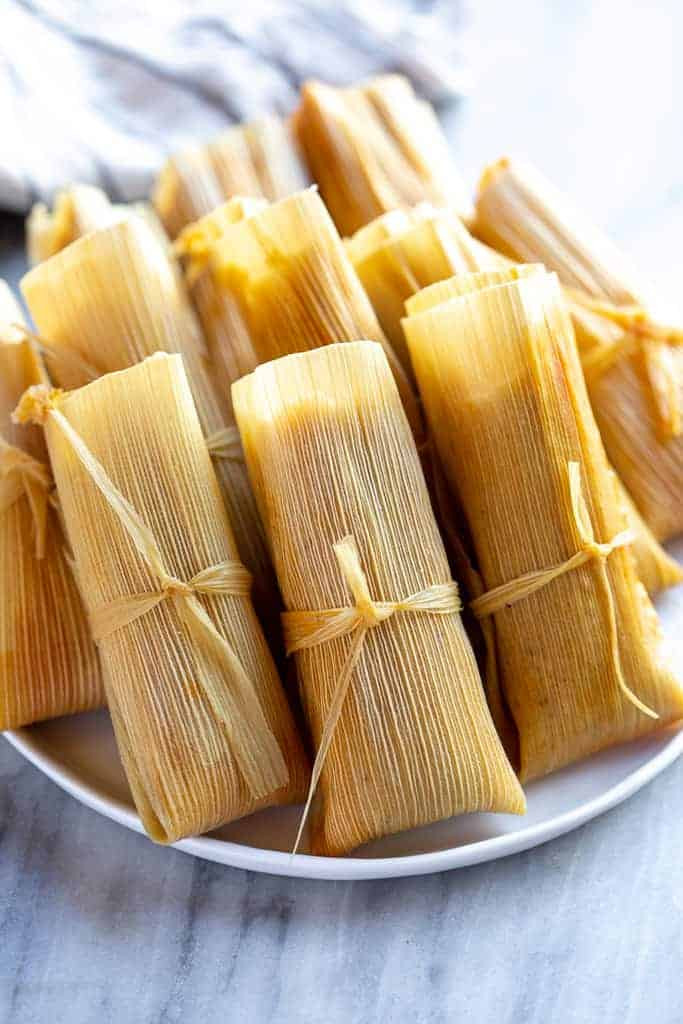Making Mexican tamales from scratch can be a rewarding experience, bringing the authentic taste of Mexico right to your kitchen, and gaymexico.net is here to guide you. This guide will provide you with easy-to-follow steps and tips to create delicious, homemade tamales, perfect for any occasion. Ready to create this delectable dish? Our guide provides detailed instructions and alternative recipes to cater to diverse tastes. Let’s explore the world of masa preparation, fillings, and cooking methods for the perfect Mexican tamales experience.
Table of Contents
- What are Tamales?
- Understanding the Key Ingredients
- Essential Equipment for Making Tamales
- Step-by-Step Guide to Making Tamales from Scratch
- Masa Preparation: The Heart of the Tamale
- Crafting the Perfect Filling
- Assembling Your Tamales Like a Pro
- Cooking Methods: Steaming to Perfection
- Serving Suggestions and Popular Pairings
- Tips and Tricks for Tamale Success
- Storing and Reheating Tamales
- Nutritional Information and Health Benefits
- Tamales Variations from Different Regions of Mexico
- The Cultural Significance of Tamales in Mexico
- Common Mistakes to Avoid When Making Tamales
- Making Tamales: A Festive Tradition
- Tamales for Dietary Needs: Vegan and Vegetarian Options
- Tools and Gadgets to Simplify Tamale Making
- The Best Occasions to Serve Tamales
- FAQ: Answering Your Tamale Questions
- Explore LGBTQ+ Friendly Mexico with gaymexico.net
1. What are Tamales?
Tamales are a traditional Mesoamerican dish, believed to have originated as early as 8000 to 5000 BC. These delicious pockets consist of masa, a corn-based dough, filled with a variety of ingredients such as meats, cheeses, or vegetables. Wrapped in corn husks or banana leaves and then steamed, tamales offer a unique and satisfying culinary experience. Tamales are a staple in Mexican cuisine and are often enjoyed during festive occasions and family gatherings. This dish is popular due to its portability, delicious flavor, and cultural importance. Making tamales is a labor of love, often a group effort, reinforcing community bonds.
 Two tamales on a plate with pico de gallo and chopped avocado.
Two tamales on a plate with pico de gallo and chopped avocado.
Alt: Two freshly made pork tamales served with pico de gallo and avocado slices on a white plate, showcasing the vibrant flavors of Mexican cuisine.
2. Understanding the Key Ingredients
To create authentic Mexican tamales, you need to gather some key ingredients. Each component plays a crucial role in achieving the right flavor and texture. Here’s a breakdown:
- Masa Harina: This is a finely ground corn flour treated with an alkaline solution (nixtamalization). Look for brands like Maseca, which are widely available.
- Broth: Use homemade or store-bought chicken, beef, or vegetable broth. The broth adds moisture and flavor to the masa.
- Lard or Shortening: Lard gives the tamales a rich, traditional flavor and tender texture. Shortening is a suitable substitute.
- Baking Powder: This helps to lighten the masa, making the tamales fluffy.
- Salt and Spices: Salt is essential for balancing the flavors. Cumin, chili powder, and garlic powder are commonly used spices to enhance the taste.
- Corn Husks: These provide the wrapping for the tamales, imparting a subtle corn flavor and keeping the tamales moist during steaming.
- Filling: Choose your favorite filling, such as shredded pork, chicken, cheese, or vegetables.
3. Essential Equipment for Making Tamales
Having the right equipment can simplify the tamale-making process and ensure better results. Here’s a list of essential tools:
- Large Bowl: For mixing the masa dough.
- Electric Mixer: To whip the lard and incorporate ingredients smoothly.
- Steamer Pot: A pot with a steamer insert to cook the tamales.
- Large Pot: If you don’t have a steamer pot, a large pot with a rack will work.
- Tongs: For handling hot tamales.
- Measuring Cups and Spoons: To ensure accurate ingredient measurements.
- Plastic Wrap: To help spread the masa on the corn husks.
4. Step-by-Step Guide to Making Tamales from Scratch
Follow these steps to create delicious, homemade tamales:
- Soak the Corn Husks: Place the corn husks in a large bowl and cover them with hot water. Let them soak for at least 30 minutes, or until they are soft and pliable.
- Prepare the Filling: Cook your choice of filling. Some popular options include red chili pork, salsa verde chicken, or bean and cheese.
- Make the Masa Dough: In a large bowl, beat the lard or shortening with an electric mixer until fluffy. Combine the masa harina, baking powder, salt, and spices in a separate bowl. Gradually add the dry ingredients to the lard mixture, alternating with broth, until a soft, spreadable dough forms.
- Assemble the Tamales: Lay a softened corn husk on a flat surface. Spread a thin layer of masa dough over the top half of the husk. Place a spoonful of filling in the center of the masa. Fold the sides of the husk over the filling, then fold up the bottom.
- Cook the Tamales: Stand the tamales upright in a steamer pot filled with about an inch of water. Steam them for 1 to 2 hours, or until the masa is firm and pulls away from the husk easily.
5. Masa Preparation: The Heart of the Tamale
The quality of the masa greatly influences the taste and texture of your tamales. Here’s how to prepare it perfectly:
- Whip the Lard: In a large bowl, use an electric mixer to whip the lard or shortening until it is light and fluffy. This step is crucial for creating a tender masa.
- Combine Dry Ingredients: In a separate bowl, mix the masa harina, baking powder, salt, and spices.
- Incorporate Wet and Dry Ingredients: Gradually add the dry ingredients to the whipped lard, alternating with the broth. Beat until a smooth, soft dough forms. The masa should be spreadable like creamy peanut butter.
- Test the Dough: To test if the masa is ready, drop a small ball of dough into a glass of water. If it floats, the masa has been properly aerated and is ready to use.
6. Crafting the Perfect Filling
The filling is where you can get creative and customize your tamales to your liking. Here are a few popular options:
- Red Chili Pork: Slow-cooked pork in a rich red chili sauce. This filling is savory and slightly spicy.
- Salsa Verde Chicken: Shredded chicken cooked in a tangy salsa verde. It’s a lighter, refreshing option.
- Bean and Cheese: Refried beans and shredded cheese. This vegetarian filling is simple yet satisfying.
- Vegetarian Medley: A mix of sautéed vegetables like zucchini, corn, and bell peppers, seasoned with herbs and spices.
7. Assembling Your Tamales Like a Pro
Assembling tamales can be a bit time-consuming, but it’s also a fun and rewarding process. Here are some tips to make it easier:
- Prepare Your Workstation: Lay out all your ingredients, including the soaked corn husks, masa dough, and filling.
- Spread the Masa: Place a corn husk on a flat surface, glossy side up. Use your hands or the back of a spoon to spread a thin layer of masa dough over the top half of the husk.
- Add the Filling: Place a spoonful of your chosen filling down the center of the masa. Be careful not to overfill, as this can make the tamales difficult to close.
- Fold the Tamale: Fold one side of the husk over the filling, then fold the other side over to create a sealed packet. Fold up the bottom of the husk.
- Secure the Tamale: If desired, use a strip of corn husk to tie the tamale closed. This helps keep the tamales intact during cooking.
 Tamale masa in a bowl, a ball of masa on a corn husk, spread out and then pork filling placed on top.
Tamale masa in a bowl, a ball of masa on a corn husk, spread out and then pork filling placed on top.
Alt: The process of making tamales, showing a bowl of prepared masa, a ball of masa spread on a corn husk, and pork filling being added.
8. Cooking Methods: Steaming to Perfection
Steaming is the traditional method for cooking tamales, ensuring they remain moist and tender. Here’s how to do it:
- Set Up Your Steamer: Place a steamer insert in a large pot and add enough water to reach just below the steamer basket.
- Arrange the Tamales: Stand the tamales upright in the steamer, with the open end facing up. Pack them tightly to help them hold their shape.
- Steam the Tamales: Cover the pot and bring the water to a boil. Reduce the heat to low and steam for 1 to 2 hours, or until the masa is firm and pulls away from the husk easily.
- Check for Doneness: To check if the tamales are done, remove one from the pot and let it cool slightly. The masa should be firm and not sticky. If it’s still wet, continue steaming for another 15-20 minutes.
9. Serving Suggestions and Popular Pairings
Tamales are incredibly versatile and can be served in various ways. Here are some popular serving suggestions and pairings:
- Toppings: Top your tamales with salsa, sour cream, guacamole, or pico de gallo for added flavor.
- Sides: Serve tamales with Mexican rice, refried beans, or a fresh salad for a complete meal.
- Drinks: Pair your tamales with traditional Mexican beverages like horchata, agua fresca, or a refreshing margarita.
- Dessert: End your meal with a sweet treat like flan, tres leches cake, or Mexican chocolate.
10. Tips and Tricks for Tamale Success
Here are some additional tips and tricks to ensure your tamales turn out perfectly every time:
- Use Hot Water for Soaking Husks: Soaking the corn husks in very hot water makes them more pliable and easier to work with.
- Whip the Lard Well: Whipping the lard until light and fluffy is essential for a tender masa.
- Don’t Overfill the Tamales: Overfilling the tamales can make them difficult to close and cook evenly.
- Steam Enough Time: Steaming the tamales for the recommended time is crucial for ensuring the masa is fully cooked.
- Check for Doneness: Always check for doneness by removing a tamale and checking the texture of the masa.
11. Storing and Reheating Tamales
Tamales are great for making ahead and storing for later. Here’s how to store and reheat them properly:
- Storing Cooked Tamales: Let the tamales cool completely before storing them in an airtight container in the refrigerator. They can be stored for up to 5-7 days.
- Freezing Cooked Tamales: To freeze tamales, wrap them individually in plastic wrap and place them in a freezer-safe bag. They can be frozen for up to 3 months.
- Reheating Tamales: To reheat tamales, you can steam them, microwave them, or bake them in the oven. Steaming is the best method for maintaining their moisture and texture.
12. Nutritional Information and Health Benefits
Tamales provide a source of carbohydrates, protein, and fiber, depending on the filling. The corn masa is a good source of complex carbohydrates, providing sustained energy. Here’s a general nutritional breakdown (values may vary based on specific ingredients and portion sizes):
- Calories: 200-300 per tamale
- Carbohydrates: 30-40g
- Protein: 5-10g
- Fat: 5-15g
- Fiber: 3-5g
13. Tamales Variations from Different Regions of Mexico
Mexico boasts a rich diversity of tamale variations, each region putting its unique spin on this beloved dish. Here are some notable examples:
| Region | Tamale Type | Key Ingredients/Characteristics |
|---|---|---|
| Oaxaca | Tamales Oaxaqueños | Wrapped in banana leaves instead of corn husks, giving them a distinct flavor. Often filled with mole negro and chicken or pork. |
| Michoacán | Corundas | Triangular-shaped tamales, often served with cream and salsa. The masa is typically made with ash, giving them a unique texture. |
| Veracruz | Zacahuil | A massive tamale, sometimes up to 3 feet long, filled with pork and cooked in an underground oven. |
| Yucatán | Brazo de Reina | A sweet tamale filled with sweetened pumpkin seeds and wrapped in banana leaves. |
| Chiapas | Chipilín Tamales | Made with chipilín leaves, which impart a unique, slightly bitter flavor. Often filled with cheese or chicken. |
| Northern Mexico | Tamales de Carne Seca | Filled with dried beef (carne seca), reflecting the region’s culinary traditions. |
14. The Cultural Significance of Tamales in Mexico
Tamales are more than just food; they are a symbol of Mexican culture and tradition. They are often prepared for special occasions such as Christmas, Día de los Muertos (Day of the Dead), and family celebrations. Making tamales is often a communal activity, with family members coming together to share the work and enjoy each other’s company. This tradition reinforces family bonds and preserves cultural heritage. In many indigenous communities, tamales are also used in religious ceremonies and offerings.
 A latina Grandmother and Lauren Allen making tamales together.
A latina Grandmother and Lauren Allen making tamales together.
Alt: Two women, one elderly and one younger, collaboratively making tamales, capturing the tradition of family involvement in Mexican culinary practices.
15. Common Mistakes to Avoid When Making Tamales
Even experienced cooks can make mistakes when preparing tamales. Here are some common pitfalls to avoid:
- Not Soaking the Husks Enough: Insufficiently soaked husks will be brittle and difficult to work with.
- Masa Too Dry or Too Wet: The masa should be spreadable but not runny. Adjust the broth accordingly.
- Overfilling the Tamales: Too much filling can cause the tamales to burst during cooking.
- Not Steaming Long Enough: Under-steamed tamales will have a sticky, undercooked masa.
- Forgetting to Check the Water Level: Make sure there is always enough water in the steamer to prevent the pot from drying out.
16. Making Tamales: A Festive Tradition
Making tamales is often a festive occasion, bringing families and friends together to share in the preparation and enjoyment of this iconic dish. A “tamalada” or tamale-making party, is a tradition in many Mexican households, especially during holidays. This event involves a group of people assembling tamales together, sharing stories, laughter, and of course, delicious food. The collective effort makes the process more enjoyable and efficient.
17. Tamales for Dietary Needs: Vegan and Vegetarian Options
Tamales can easily be adapted to suit vegan and vegetarian diets. Here are some delicious filling options:
- Vegan Tamales: Use vegetable broth instead of meat-based broth in the masa. Fill with a mixture of roasted vegetables, such as corn, zucchini, and bell peppers, seasoned with chili powder and cumin.
- Vegetarian Tamales: Use vegetable broth in the masa. Fill with a combination of refried beans and cheese, or sautéed mushrooms and spinach.
- Sweet Corn Tamales: These can be made with fresh corn, sugar, and cinnamon, and are a popular dessert option.
18. Tools and Gadgets to Simplify Tamale Making
While tamales can be made with basic kitchen tools, there are some gadgets that can simplify the process:
- Tamale Steamer Pot: A pot specifically designed for steaming tamales, with a tall insert and lid.
- Masa Spreader: A tool for evenly spreading the masa on the corn husks.
- Corn Husk Ties: Pre-cut corn husk strips for tying the tamales.
- Electric Masa Beater: An electric mixer designed to handle large quantities of masa.
19. The Best Occasions to Serve Tamales
Tamales are perfect for a variety of occasions. Here are some of the best times to serve them:
- Christmas: Tamales are a traditional Christmas dish in many Mexican households.
- Día de los Muertos (Day of the Dead): Tamales are often placed on altars as offerings to loved ones who have passed away.
- Family Gatherings: Tamales are a great dish to share with family and friends at gatherings and celebrations.
- Potlucks: Tamales are easy to transport and serve, making them a popular choice for potlucks.
- Casual Meals: Tamales can also be enjoyed as a casual weeknight meal.
20. FAQ: Answering Your Tamale Questions
Here are some frequently asked questions about making tamales:
What is masa harina?
Masa harina is a finely ground corn flour treated with an alkaline solution (nixtamalization). It is used to make the dough for tamales.
Can I use shortening instead of lard?
Yes, shortening can be used as a substitute for lard in the masa. However, lard will give the tamales a richer, more traditional flavor.
How do I know when the tamales are done?
The tamales are done when the masa is firm and pulls away from the husk easily. You can also check by removing one from the pot and letting it cool slightly. The masa should be cooked through and not sticky.
Can I make tamales ahead of time?
Yes, tamales can be made ahead of time and stored in the refrigerator or freezer. Reheat them by steaming, microwaving, or baking in the oven.
What are some popular tamale fillings?
Popular tamale fillings include red chili pork, salsa verde chicken, bean and cheese, and roasted vegetables.
How do I prevent my tamales from drying out?
To prevent tamales from drying out, make sure to steam them for the recommended time and store them properly in an airtight container. When reheating, use the steaming method to maintain their moisture.
Can I make tamales without corn husks?
Yes, you can use banana leaves as a substitute for corn husks. This is common in some regions of Mexico, such as Oaxaca.
What is a good substitute for broth in the masa?
If you don’t have broth, you can use water with a bouillon cube or a vegetable stock concentrate for added flavor.
How do I keep the tamales from sticking to the pot while steaming?
To prevent tamales from sticking to the pot, place a layer of extra corn husks or a steamer rack at the bottom of the pot.
Are tamales gluten-free?
Yes, tamales made with corn masa are naturally gluten-free. However, it’s essential to ensure that the filling ingredients are also gluten-free.
21. Explore LGBTQ+ Friendly Mexico with gaymexico.net
Now that you’re equipped to make authentic Mexican tamales from scratch, why not plan a trip to Mexico to experience the vibrant culture and cuisine firsthand? gaymexico.net offers comprehensive guides to LGBTQ+ friendly destinations, events, and accommodations throughout Mexico. Discover welcoming cities like Puerto Vallarta, Mexico City, and Cancun, where you can explore the local gay scene, enjoy cultural attractions, and indulge in delicious Mexican cuisine.
 Tamales wrapped in corn husks and tied, lined up on a plate.
Tamales wrapped in corn husks and tied, lined up on a plate.
Alt: Several tamales neatly wrapped and tied in corn husks, arranged on a white plate, showcasing the traditional presentation of Mexican cuisine.
Plan your next adventure with gaymexico.net and experience the beauty and diversity of Mexico in a safe and welcoming environment. We provide up-to-date information on LGBTQ+ rights, events, and community resources. Join us in celebrating the rich culture and warm hospitality of Mexico.
Address: 3255 Wilshire Blvd, Los Angeles, CA 90010, United States.
Phone: +1 (213) 380-2177.
Website: gaymexico.net.
Ready to explore Mexico? Visit gaymexico.net today for travel guides, event listings, and community connections. Let us help you plan an unforgettable trip filled with delicious food, vibrant culture, and warm hospitality.
